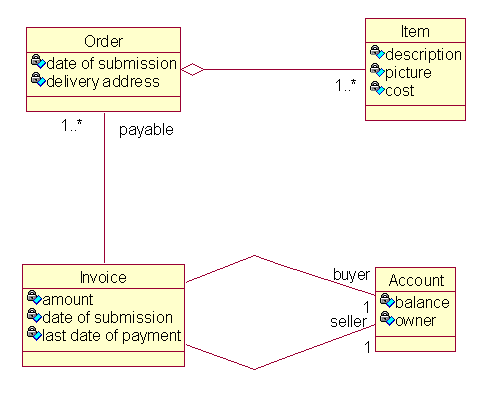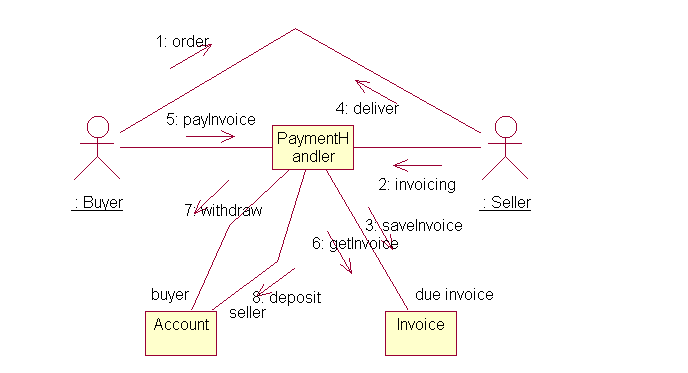
Requirements Capture: From Vision to Requirements
It is the process of finding out what is to be built in terms of software system development.
Potential problem:
Requirement specifications may not readily transform into design and implementation specification.
Content of a feature:
A domain model describes the important concepts of the context as domain objects.
A business model describes the (existing or perceived) processes of the business of which the software system to be developed will be a part.
Use cases with tagged values
(as requirement specification)
|
Work flow |
Resulting artifacts |
|
List candidate requirements |
Feature list |
|
Understand system context |
Business or domain model |
|
Capture functional requirements |
Use-case model |
|
Capture nonfunctional requirement |
Supplementary requirements or individual use cases. |
A domain model consists of domain objects and their relationships.
A domain object represents a thing that exists or event that transpires in environment in which the system works.
Types of domain objects:

Workshop with domain experts, domain analysts and modeler
Modest-sized: 10-50 classes
The context of the system to be developed, not the system itself.
6. Understanding the system context using a business model
It represents something which workers access, inspect, manipulate, produce, or use in a business use case.
A set of such entities that form a recognizable whole to an end user

Step 1: Build a business use case model
Step 2: Build an object model for each business use case